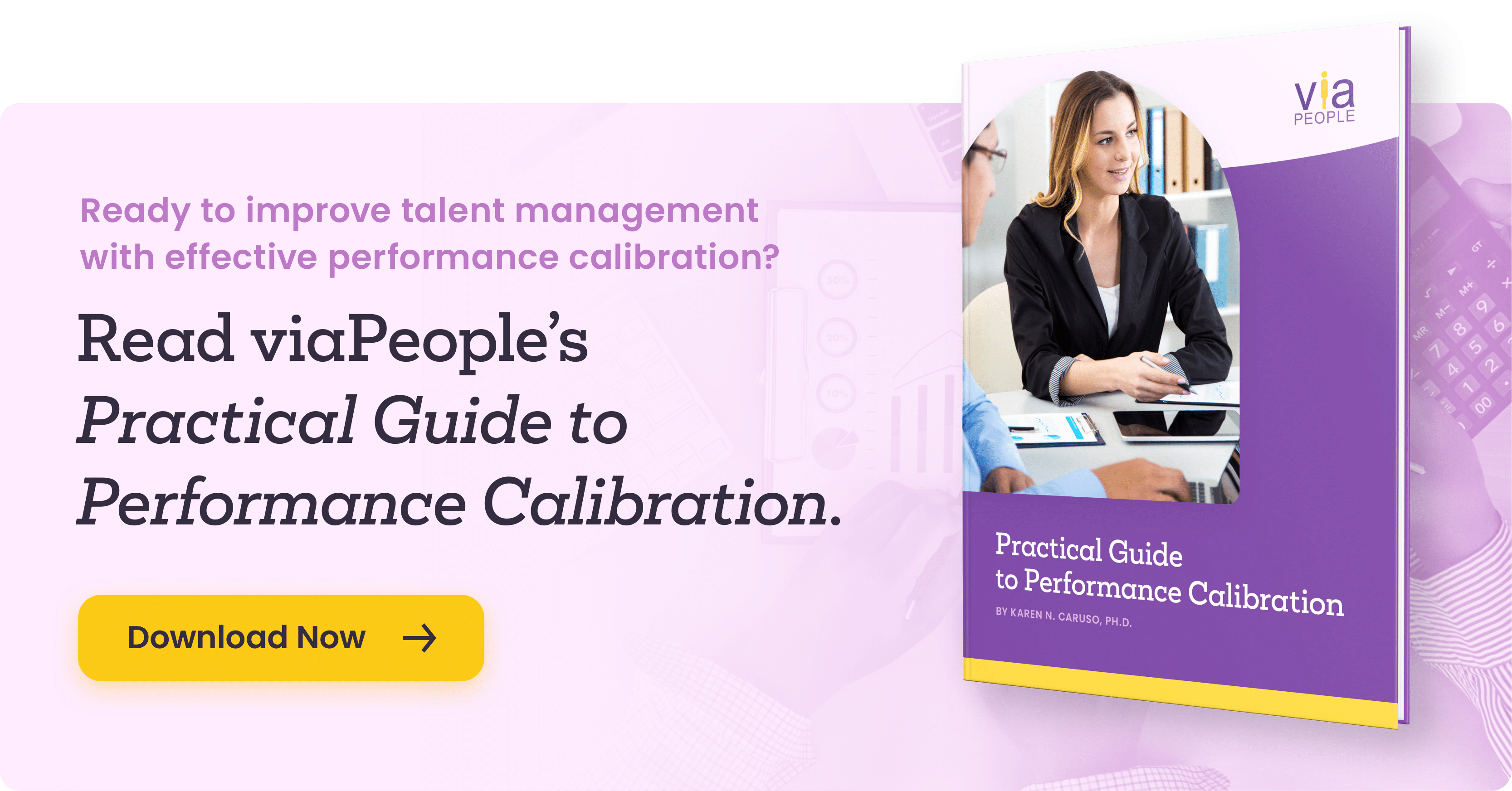8 Steps to Improve Performance Management for Distributed Teams
 Having a distributed team comes with some advantages, such as broader access to talent for your company and greater flexibility for team members, but it can also present some unique challenges. HR professionals are learning firsthand that performance management is one of these areas impacted by a distributed team model.
Having a distributed team comes with some advantages, such as broader access to talent for your company and greater flexibility for team members, but it can also present some unique challenges. HR professionals are learning firsthand that performance management is one of these areas impacted by a distributed team model.
Despite the challenges, with the right understanding and tools, you can optimize your company’s approach to performance management for your modern distributed workforce.
Unique Challenges Involved in Remote Performance Management
Remote work was already gaining traction prior to the pandemic, but now, companies are embracing remote and hybrid models in unprecedented numbers. And that’s not a temporary trend. Well over a third of work teams and departments in the U.S. plan to continue working fully or partially remotely five years from now.
As companies are adapting to some or all of their employees working remotely, they’re discovering some unique challenges this introduces to the performance review process. One of the main differences is that supervisors and colleagues can no longer rely on general impressions gained from observing or collaborating with employees in person.
The good news is that many best practices of performance management remain constant regardless of where employees are working. In fact, many perceived challenges related to reviewing remote employees’ performance are actually opportunities to improve your performance review process for all employees, whether on-site or remote.
For example, supervisors’ inability to observe remote employees as closely may seem like an obstacle to performance management, but this prevents supervisors from defaulting to praising the employees who put in long hours at the office. Instead, they should focus on the results each employee produces, allowing for a variety of working styles. This isn’t just a compromise to cope with remote work—it’s a positive change in the process.
→ Need help calibrating your remote performance reviews to ensure accuracy? Check out our Practical Guide to Performance Calibration.
How to Effectively Approach Performance Management for Remote Workers
Let’s look at eight steps that can help you revamp your approach to performance management for a new era of remote and hybrid work.
1. Adapt performance measures as needed after a pivot to remote work.
First, if you’ve recently made the transition to a distributed work model, it’s best to give your employees—and your company as a whole—a bit of extra flexibility during this time. Remember that most are experiencing remote work for the first time. In a Pew Research Center survey where 71 percent of respondents were working from home in 2020, just 20 percent were already working remotely prior to the pandemic.
Transitioning to a new style of working can be a challenge for anyone, so be sure to give employees credit for responding with agility and a positive attitude, even if their work isn’t quite where you want it to be. For employees who are struggling with the change, it’s appropriate to have more leniency than you would in other circumstances, but do not leave performance standards behind.
2. Ensure all employees have access to clear performance standards for their roles.
No matter where employees are working, they should always have access to standards that clearly define success for their role. Especially when employees may feel less connected, it’s crucial that they can refer to these standards to confirm that, even if their working context looks a bit different, they’re fulfilling their responsibilities. Or they may identify gaps in their performance they need to address.
Supervisors and HR personnel should also take time to review performance standards to ensure they are accurate and feasible with current work arrangements.
3. Focus on results rather than work processes.
It’s always been true that employees have different working styles, but those differences are accentuated when employees are working remotely. The standardizing effects of the office fade, and each employee has the opportunity to determine what works best with their circumstances and personal preferences.
For some, it may mean only checking email at certain points of the day so they can concentrate fully on one task at a time. For others, it may look like multitasking and frequent conversations with colleagues to collaborate. Rather than micromanaging employees and encouraging certain working styles, focus on the results that employees produce. If they’re fulfilling their responsibilities, that’s what truly matters.
4. Keep the lines of communication open with frequent feedback.
Communication is one of the top challenges remote workers experience. Feeling disconnected from colleagues and supervisors can make it difficult to know how you’re doing. This is why frequent feedback is critical when it comes to performance management for remote workers.
Strive for a performance review process that feels transparent and does not blindside employees. Instead, employees should always have an idea of how they’re doing, no matter how long it’s been since their last formal review process. Make sure employees feel comfortable reaching out to their supervisors if they have questions about how they’re doing or how they could improve.
5. Celebrate everyday accomplishments.
Some employees love working from home, but others may experience a dip in morale if they feel isolated or are struggling with the new arrangements. Find ways to encourage all employees by celebrating even seemingly small accomplishments.
A great way to do this is to have employees shout each other out in whatever communication channels your company uses. Maybe a team lead facilitated a great collaboration session through a video call, or a team member took on some extra tasks to help out a colleague—these are great opportunities to encourage individuals and, in turn, raise morale across the organization.
6. Share development plans to help employees progress.
Just as employees need access to performance standards to know what’s expected of them in their current roles, they also need a blueprint for the future. Development plans guide employees in advancing their skills and preparing them for the next step in their careers.
Managing employee performance may feel a bit more complicated or less intuitive when you’ve transitioned to a distributed workforce, but you should still strive to thrive—not just get by—in your remote performance management. Help employees maintain an optimistic forward focus so they can excel in their current roles and expand their capabilities to continue to be an asset to the company in the years to come.
7. Calibrate performance within and across teams to ensure consistency.
Employees should receive performance reviews that are accurate and based on consistent standards. If supervisors are completing performance reviews independent of each other and based on their own ideas of what constitutes excellent, average, or poor performance, employees are likely to feel their performance ratings are somewhat arbitrary and perhaps even unfair—and they’re likely right.
This is why performance calibration should be a top priority for your organization. A performance calibration meeting—whether it’s in person or through a conference call— is an important step to standardize performance reviews across your company. Especially as managers may be adapting to new ways of observing their employees’ performance, it’s wise to give special attention to the performance review process and make adjustments as necessary before sharing reviews with employees.
8. Adopt a modern software solution to facilitate remote performance management.
Don’t rely on outmoded methods for remote performance management. As your company progresses into a new normal or continues to embrace a distributed workforce model, be sure you’re empowered by the right technology solution. Performance management software can assist you in tracking employee performance and equipping employees to progress in their careers.
viaPeople offers a performance management solution that can help you optimize your approach to performance management for all your employees, whether in person or remote. Working with a distributed team can be a challenge, but you can seize the opportunity to improve your remote performance management process for the benefit of each employee and your company as a whole.
Contact us to schedule a demo or learn more about how ViaPeople can help you effectively manage your distributed team.
Share this
You May Also Like
These Related Stories

Guide to Choosing the Best Performance Management Software for Your People Team

How to Improve Performance Management for Financial Services: Use Deal Team Feedback


